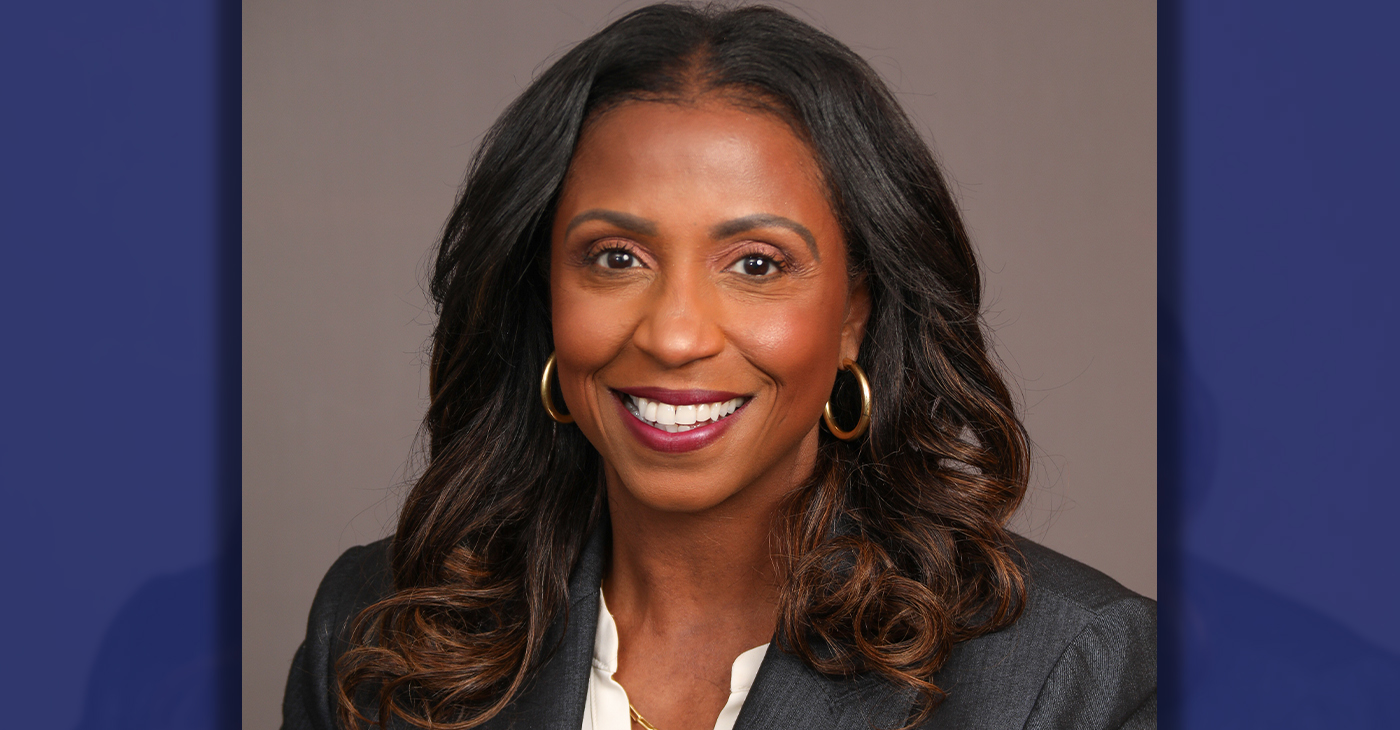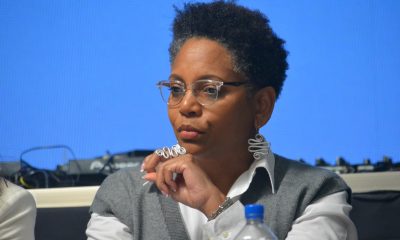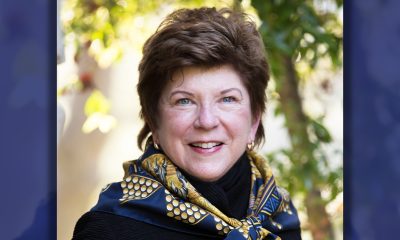Business
Equity Report Reveals Statistics on Black Women Compared to Other Races
Black women in the Golden State trail behind their counterparts from other ethnic groups in median wealth and a lower percentage of them have obtained higher education degrees. Black mothers and their babies have mortality rates that surpass women from other racial and ethnic backgrounds.

By McKenzie Jackson
California Black Media
Black women in the Golden State trail behind their counterparts from other ethnic groups in median wealth and a lower percentage of them have obtained higher education degrees. Black mothers and their babies have mortality rates that surpass women from other racial and ethnic backgrounds.
Kellie Todd Griffin, president and CEO of California Black Women’s Collective Empowerment Institute (CBWCEI) said the state of Black women in California is troubling.
“There is so much work to do,” she explained. “There is a gap with Black women. Without immediate interventions from a policy and practice transformation standpoint, we’re not going to be able to change the trajectory.”
Griffin’s remarks came a day after the Center for the Advancement of Women at Mount Saint Mary’s University released its 12th annual “Report on the Status of Women and Girls in California” on March 22.
The 40-page report, with the tagline “Advancing Equity: Leading with Meaning and Purpose,” is the Los Angeles university’s assessment of the state of women in California based on a number of social and economic indicators.
It is “what women need in order to attain agency for themselves, add meaning to their lives, and contribute fully to their families, communities, and businesses,” wrote Mount Saint Mary’s University President Ann McElaney-Johnson in the document’s opening pages.
The report highlights issues affecting women and girls in California post-COVID-19 pandemic. The trends documented pertain to women’s education, economic security, health, household labor, and wage and wealth divisions.
The paper’s authors and staff at Mount Saint Mary’s are advocates who push for changes in legislation to help women and girls in the state.
Robin L. Owens, interim director of the center and associate professor of Religious Studies at Mount Saint Mary’s, said all of the study’s findings need to be addressed.
“My personal opinion, wealth impacts everything, so that is the one that struck me the most,” she emphasized. “The differences in the wealth gap between men and women, but also between African American women and other races. That was striking.”
The wealth gap among women is vast, according to the study. For every $100 owned by a white woman, Latinas own $10, and Black women own $9.
Twenty-four percent of households led by single Black women and 25% of Latina households are more likely to live in poverty than single white (14%) and single Asian (15%) women households.
In corporate leadership, 5% of the women in management positions and CEO chairs are African American. In comparison, 46% of women in management positions are white and 86% of women CEOs are white.
Black women hold 4% of the bachelor’s degrees obtained by California women, while white women have 47%. Among women holding graduate and professional degrees, 52% are white women, whereas African American women make up only 5%.
There is a connection, Griffin stated, between Black women’s trailing in education and wealth figures.
“We’re the smallest population amongst the groups that were assessed, however we shouldn’t be 4% of the bachelor’s degree holders,” she noted. “It’s disheartening. How do you get into corporate leadership if a majority of good-paying jobs require a degree? We can’t get in the door to be able to accelerate up.”
Black women are more than four times more likely to die from pregnancy-related causes then white women, and Black babies are more than twice as likely to die within one year than white babies.
The maternal death rates of African American women and their babies are comparable to numbers from decades ago despite funds and efforts put into improving that rate for all women, Griffin said.
“That is not an improvement,” she said.
CBWCEI is focused on using the numbers from the report and other statistics they have gathered to shine a light on the challenges Black women in the state have and to uplift their voices.
The group advocated for and received state funds to create the California Black Women’s Think Tank at Cal State Dominguez Hills, which focuses solely on Black women and girls through research and leadership development. The nonprofit organization is also conducting other African American women-geared initiatives.
“We are focused on Black women, Black girls, Black joy, Black advancement,” Griffin stated. “We understand if we invest in Black women, then we invest in Black communities. We are investing in Black California.”
Owens hopes readers of the report take actions like the CBWCEI.
“I hope people read the report and really give some thoughtful consideration to how they can add to the advancement of women in general and African American women in particular,” she said.
“Even if it is in a small way. Sometimes we tend to think we have to fix the whole problem. If we could just find out in our own corner of the world, how we could make a small increase in helping African American women and women in general that would make a difference.”
Business
Maximizing Your Bank Branch Experience
In a world of online tools that let you make banking transactions with the touch of a button, the idea of visiting a branch might seem unnecessary. However, if you haven’t visited your local branch recently, you might be surprised by what it has to offer. Your branch is much more than a place to deposit and withdraw money – it can offer the opportunity to build valuable relationships with people who can help you achieve financial independence.

Sponsored by JPMorgan Chase & Co.
In a world of online tools that let you make banking transactions with the touch of a button, the idea of visiting a branch might seem unnecessary.
However, if you haven’t visited your local branch recently, you might be surprised by what it has to offer. Your branch is much more than a place to deposit and withdraw money – it can offer the opportunity to build valuable relationships with people who can help you achieve financial independence.
Diedra Porché, Head of Community and Business Development at Chase, talks about how the bank model has evolved to maximize the branch experience for customers; how connecting with your local branch team can help you think differently about money and investing for your future.
How can a customer feel connected to a bank branch?
I love that question because we ask ourselves the same thing every day. Being part of the community means meeting with local leaders to find out what they need from us and then designing our branches around that. For example, at some of our community branches we have what we call a living room where we can host financial workshops, small business pop-up shops or nonprofit organization meetings. We also hire locally. You feel much more connected talking about financial aspirations with people from your community who went to the same high school, place of worship or maybe frequented the same recreation center down the street when they grew up.
How can I build a relationship with my bank?
Customers should feel comfortable sharing their goals, needs and wants with their banker. Also, it helps to remember the Community Manager is there to help solve your finance challenges and build a roadmap for success. You might have a short-term or long-term goal to open a business, build your credit, become debt-free, buy a home, or save for retirement, and our community team can help. At Chase, we strive to make dreams possible for everyone, everywhere, every day. Your financial future starts with building those relationships.
How can customers change negative perceptions they have about managing their money?
Far too often, customers are intimidated when they visit a bank. Our goal is to demystify banking and money myths empowering people to make the right decisions. For example, a big myth is assuming you need a lot of money to have a bank account. You don’t! Another myth is you need to carry a balance on your credit card to build credit — actively using your credit card can demonstrate that you can use credit responsibly but carrying a balance won’t necessarily improve your credit score. Finally, understanding mobile and online banking safety is key. There are so many safeguards and protections in place to guard your personal information and funds.
What’s an easy step one can take to shift their financial behavior right now?
Cultivating self-awareness is a good first step. Start by taking inventory of your spending. Be honest with yourself about what you need and what you want. Too often, people confuse the two, which leads to bad decisions. Rent is something you need to pay. An extra pair of shoes is something you may want but before you buy them ask yourself if that’s the best use of your hard-earned money. Too often, our beliefs and our fears shape our financial realities. If any of those beliefs are limiting your financial behavior, it’s important to question and examine them, and then decide you’re open to learning something different.
What’s one perception about banking that you’d like to change?
I think folks are surprised there are so many resources available and accessible both at our branches and online, it’s always a good idea to visit a nearby branch and speak to a Community Manager or banker. Outside of what we offer in-branch, our teams also work with local neighborhood partners who provide a variety of services to support the community, businesses and residents. I received a unique piece of feedback from an employee who started with the bank and had lived in the same community his whole life. When he visited his local community branch, he said, “Diedra, when I walked in, I felt dignified.” Every time I recount that story, it warms my heart because that’s what we want — we want our centers to belong to the community.
Activism
Oakland Post: Week of May 1 – 7, 2024
The printed Weekly Edition of the Oakland Post: Week of May 1 – 7, 2024

To enlarge your view of this issue, use the slider, magnifying glass icon or full page icon in the lower right corner of the browser window. ![]()
Activism
Oakland Post: Week of April 24 – 30, 2024
The printed Weekly Edition of the Oakland Post: Week of April 24 – 30, 2024

To enlarge your view of this issue, use the slider, magnifying glass icon or full page icon in the lower right corner of the browser window. ![]()
-

 Community2 weeks ago
Community2 weeks agoFinancial Assistance Bill for Descendants of Enslaved Persons to Help Them Purchase, Own, or Maintain a Home
-

 Activism4 weeks ago
Activism4 weeks agoOakland Post: Week of April 3 – 6, 2024
-

 Business3 weeks ago
Business3 weeks agoV.P. Kamala Harris: Americans With Criminal Records Will Soon Be Eligible for SBA Loans
-

 Activism3 weeks ago
Activism3 weeks agoOakland Post: Week of April 10 – 16, 2024
-

 Community3 weeks ago
Community3 weeks agoAG Bonta Says Oakland School Leaders Should Comply with State Laws to Avoid ‘Disparate Harm’ When Closing or Merging Schools
-

 Community2 weeks ago
Community2 weeks agoOakland WNBA Player to be Inducted Into Hall of Fame
-

 Community2 weeks ago
Community2 weeks agoRichmond Nonprofit Helps Ex-Felons Get Back on Their Feet
-

 Community2 weeks ago
Community2 weeks agoRPAL to Rename Technology Center for Retired Police Captain Arthur Lee Johnson

















































